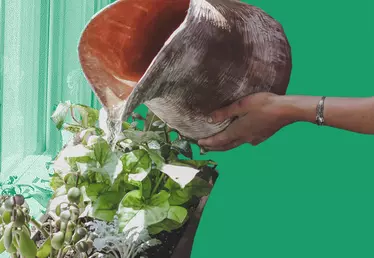

Hero banner custom title
Where can we find hidden biodiversity in our cities?
4 min
Although urban spaces may seem devoid of life, the biodiversity in our cities can actually be rich. We just need to look hard enough.
Biodiversity can be defined as the diversity of all living beings, including plants, animals and fungi. Essentially any form of life can be considered biodiversity, from bed lice to mint plants to tigers.
Surprisingly enough, two of the world’s largest cities - Sao Paulo and Mexico City - are some of the most biodiverse. Sao Paulo sits right between Brazil’s Atlantic rainforest and the tropical savanna of the Cerrado, two abundant biomes. As for Mexico City, it was founded on lake beds where the northern highlands of the country meet wooded volcanoes. According to a 2017 article from the Guardian, the city contains 2% of the world’s species. This means that, although the urban sprawl may seem devoid of life, wilderness can still manage to make its way through to the city.
Lack of literacy
Ricardo Rocha, a conservation ecologist and post-doctoral researcher at the University of Porto in Portugal, says that to find hidden biodiversity all it takes is for us to open our eyes. “There is a lack of awareness of biodiversity in urban spaces,” he says, “But I think that’s largely due to the lack of literacy on the topic. Most of us are not aware or receptive of the biodiversity that surrounds us, so we don’t tend to look for it.”
More than half of the world’s population lives in urban areas and most of us believe that nature can only flourish outside of these spaces. For a long time, cities have been deemed sterile environments housing humans, cars and buildings. But cities actually contribute more to wildlife than we think and can even be important refuges for some plant and animal species.
“Most of us are not aware or receptive of the biodiversity that surrounds us, so we don’t tend to look for it.”
Instead of looking at our cities as hostile environments for wildlife, a change of perspective can help us see them as unconventional habitats that biodiversity is capable of adapting to. In fact, there are some species that even thrive when humans are around. Cockroaches, mice and pigeons are all classic examples of abundant wildlife in most cities. “They are called synanthropic species and they’re predisposed to live side-by-side with humans,” Rocha says. There are also species that have adapted to urban settings and now flourish in them. “Swifts and swallows, for example, used to nest in cliffs. Now they are using buildings with similar features to nest and still feed off insects flying high above our cityscapes to survive,” the conservationist explains.
Rebel Botanists
Similarly, plants are great examples of resilient and adaptable forms of biodiversity. While efforts to make urban spaces more green are becoming more and more widespread, city dwellers often forget how much greenery can burst through concrete. From thyme to daisies to sycamore trees and even moss, our cities are rich with plant varieties that go beyond grass in parks. In an effort to educate the public, “rebel botanists” have even taken to chalk to highlight the biodiversity in cities like London, while urban foragers like John The Poacher supply some of the city’s finest restaurants with local produce from Hackney.
In order to find hidden biodiversity in cities, Rocha says it’s important to look for resources necessary for specific wildlife to thrive. “Does the animal need water to breed? Can it live off bin scraps? Does the plant need lots of humidity to thrive?” Rocha asks, suggesting that we must match our urban settings to the needs of wildlife in order to see it bounce back. But a healthy dose of curiosity and a plant encyclopedia can go a long way too, he says.
“It’s our responsibility to aim for city spaces that are the most welcoming and friendly to biodiversity”
As the rebel botanists have shown, biodiversity can be found almost anywhere. Look between cracks in the pavement and you can find flourishing flowers that are more than just weeds. Observing the tracks in any underground train network, an intricate world of rodents appears. And even in our own homes, some critters can even reveal the conditions of our own environment. Silverfish, for example, thrive in damp and moist places. So instead of seeing them as a nuisance, see them as a sign to potentially help you find water damage. “It’s our responsibility to aim for city spaces that are the most welcoming and friendly to biodiversity,” Rocha concludes.












